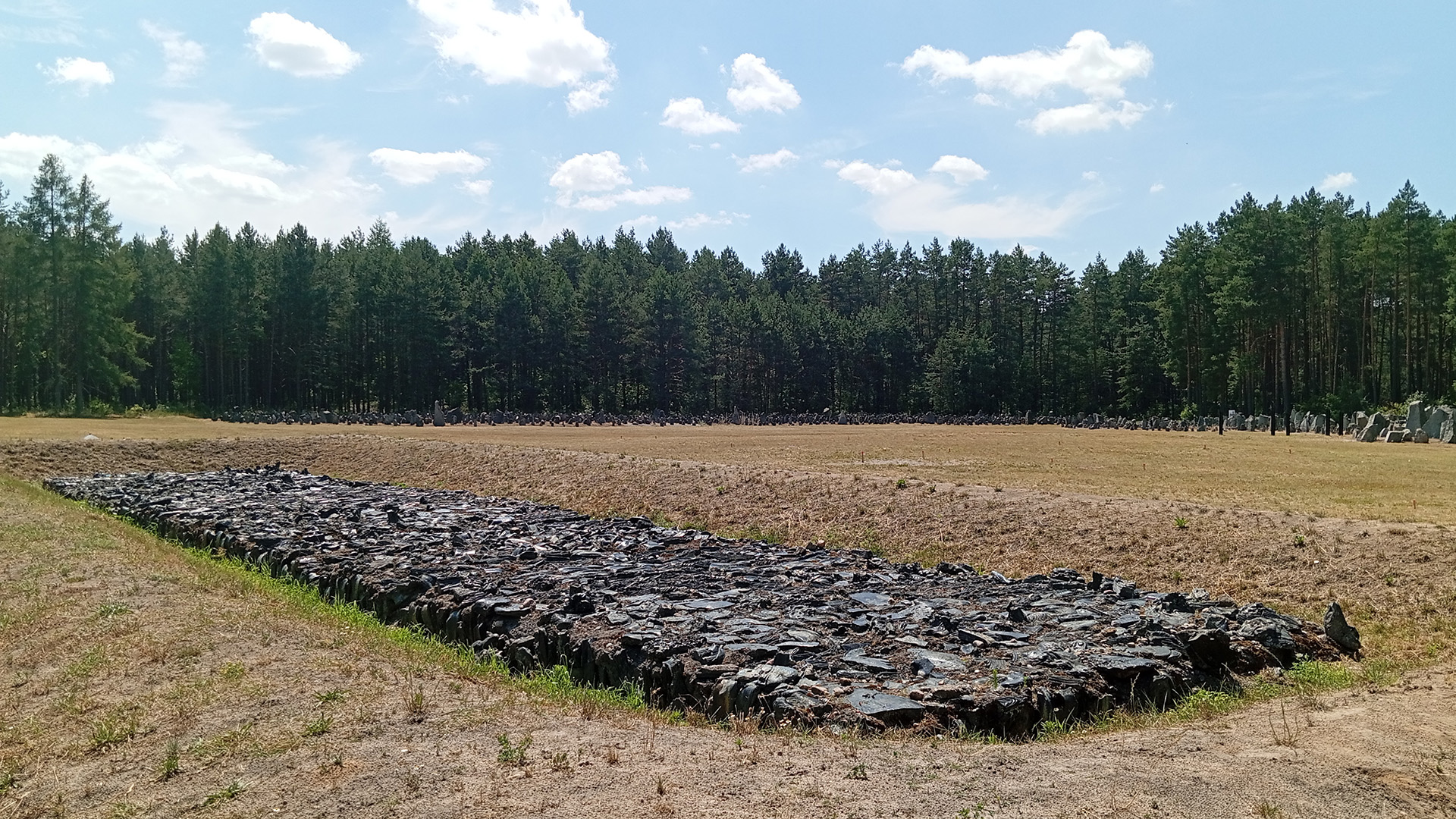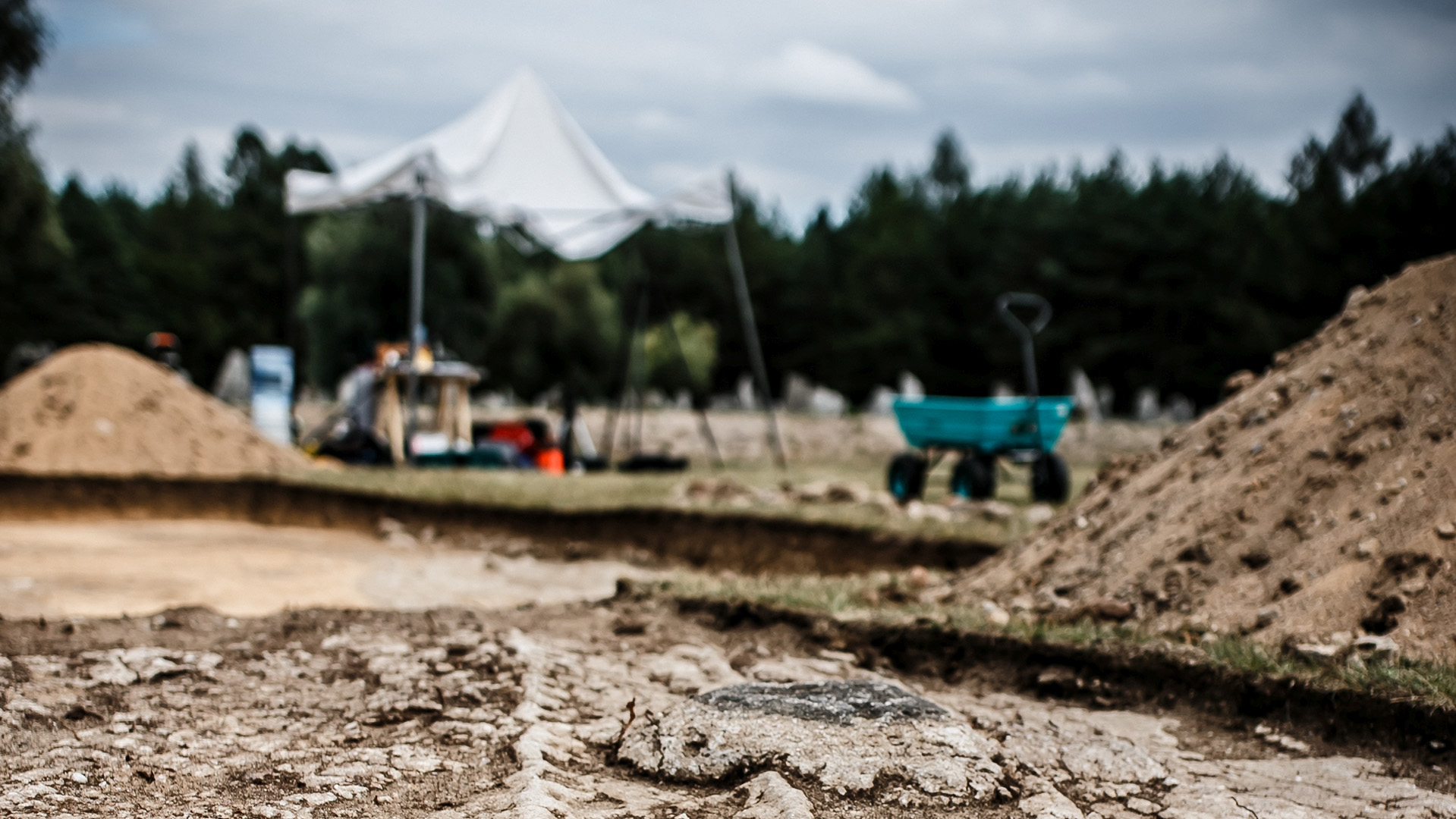Scientists investigate the grounds of the Treblinka Extermination Camp
At the beginning of July, research work began at the Treblinka II Extermination Camp. A team of scientists led by Dr Sebastian Różycki of the Division of Photogrammetry, Teledetection and Spatial Information Systems at the Faculty of Geodesy and Cartography is carrying out a scientific project aimed at verifying the location of new gas chambers and cremation pit grates in the grounds of the former camp. This is the next stage of research carried out by experts from WUT.
The research work is carried out as part of the project entitled “New gas chambers and cremation pit grates: search and inventory research in the area of the Treblinka Extermination Camp”. The research is financed by Poland’s Ministry of Culture and National Heritage. The aim of the scientists is to confirm the location of the so-called new gas chambers and grates – the places of most important in terms of camp’s topography and the process of mass extermination. The experts' task is also to carry out recovery operations in the area of the so-called Black Road connecting the Treblinka II Extermination Camp and the Treblinka I Forced-Labour Camp – in June this year, following the decision of the Ministry of Culture and National Heritage, the road was closed to vehicular traffic due to the fact that the Germans had used elements of matzevot (Jewish tombstones) to build it. The work is carried out under the supervision of a representative of the Rabbinical Commission for Jewish Cemeteries.
The work of WUT scientists at the camp has been going on for years
Researchers from the Warsaw University of Technology have been working in the Treblinka I and Treblinka II camps for many years. Thanks to their efforts, it was possible to verify the boundaries of the Treblinka II camp, as well as locate the so-called old gas chambers. This year's research focused on the area located between the monument to the victims of the Treblinka death camp and the so-called grate – a symbolic monument commemorating the cremated corpses of the camp’s prisoners.
In 2022 and 2023, scientists carried out research on selected fragments of the area of the former Treblinka II Extermination Camp using a GPR, magnetometer and conductivity meter. The results of geophysical prospections indicated the places where surveys were carried out at the beginning of July. The geophysical anomalies that the researchers found made it possible to delineate a rectangle – the place where the so-called new gas chambers are probably located.
Surveys carried out using geophysical methods produced the assumption that the foundations of the so-called new gas chambers are located at a shallow depth. The selected areas were marked out in the field with centimetre precision. The archaeological work was carried out by a team (the Wykop na Poziom company) that participated in projects carried out by the Warsaw University of Technology in the camp area in 2022 and 2023.
- According to the first findings, we managed to locate new gas chambers on the premises of the Treblinka II Extermination Camp. Our discovery is confirmed not only by the results of surveys, but also by their correlation with the accounts of witnesses and prisoners of the camp who managed to escape during the uprising that broke out on 2 August 1943. The research will continue. It will include the analysis of artifacts that were obtained during the surveys. It can be said that the research on the grounds of the former extermination camps has been definitively completed by our team. The discovery made by the team of the Warsaw University of Technology is the last stage of the search for the most important objects related to the death camps in Bełżec, Sobibór and Treblinka - says Dr Sebastian Różycki, head of the WUT research team.
Although the Treblinka II camp existed for a relatively short time, just over a year, it was the second-largest camp in occupied Europe in terms of the number of victims – just after Auschwitz-Birkenau. It was created as part of Operation Reinhardt, and transports of prisoners from Jewish ghettos throughout the country and Europe were directed to it. According to the sources of the Institute of National Remembrance, about 850,000 Jews died in the camp. After the uprising that broke out in the camp in August 1943. The Germans began liquidating the camp and covered up its traces. Not only were the buildings demolished, but the camp area was also ploughed and a farm was established on its premises.
- The biggest challenge during the work was the awareness of where we were undertaking work. The aim was to locate new gas chambers, which were created to replace the old chambers that did not fulfil their role in the process of extermination of the Jewish population. Another very important aspect was the observance of aspects of Halakhic law. During the work, we were supported by a representative of the Rabbinical Commission for Jewish Cemeteries. This meant that the research conducted differed from any archaeological research conducted in Poland and abroad. The method of conducting field research was established earlier, and as part of the project, guidelines were created for the first time in the history of work carried out in such sites. This material is unique in the world - Dr Sebastian Różycki stresses.
For many years, the camp area was well hidden. Only the efforts of researchers made it possible to reconstruct its size, topography and the tragedy that took place here. The results of the research work of the WUT team of scientists will be presented in September during a seminar as part of the Science Festival, which will take place at the Warsaw University of Technology.













